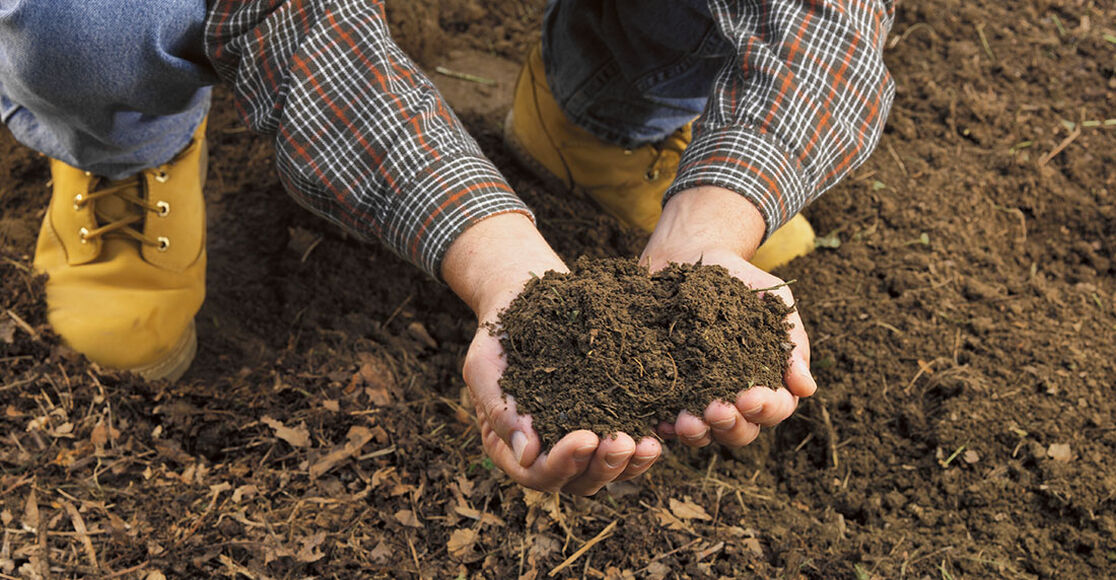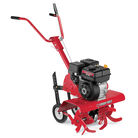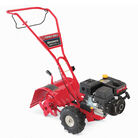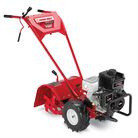Now that it’s officially planting season, you may be eager to start adding seedlings and turning your planning to practice. But, is your garden soil up to par? Amending soil by correcting its texture and adding nutrients is important for overall plant health since soil is the foundation of a healthy garden.
All types of soil can use amendments, but some common types that need extra care are sandy, rocky and clay soil. Soil that is sandy or clay-like often lacks proper nutrients to help plants grow, while rocky soil can lack nutrients and water retention. Luckily, there are a few simple ways to amend soil to get it ready for planting.
Soil Basics
Soil is evaluated based on its fertility and texture. Fertility is measured by the amount of essential nutrients in the soil and its pH levels. All plants need three primary nutrients:
- Nitrogen for healthy leaf and stem growth
- Phosphorus for root growth
- Potassium for overall plant health
The pH level measures the soil acidity and alkalinity. The scale ranges from 1.0-14.0, with 7.0 being neutral. Numbers that are higher than 7.0 are more alkaline, and lower numbers are more acidic. Many plants thrive in the low acidic to neutral range of 6.2-6.8; however, that’s not true for all plants. Check your seed packs or ask your local nursery for the level your soil needs to reach. You can test your garden’s pH level by using a soil test, which can be found at most garden stores, or you may be able to send soil to a local garden store or county extension office for testing. If the results show your soil is too acidic, then it’s best to apply lime to your lawn to raise the soil’s pH level.
Texture refers to the size of soil particles. Sandy soils have large particles; water, air and plant roots can move freely in sandy soil, but if it’s too loose, then plants may become uprooted as soil erodes. On the other side of the spectrum, there’s clay soil which consists of small, tightly packed particles that hold nutrients well, but leave little room for water, air or roots. An easy way to test soil quality is by picking up a small amount and rolling it between your thumb and finger. If it breaks apart easily, then it is sandy. If it can be rolled into a ribbon, then it is clay. While sandy and clay soils typically require the most attention, there are other types of soil – including chalk, loam, peat, silt and subsoil – that can be amended by simply adding compost to refresh nutrients.
Whatever the issue may be with your soil, do not try to amend your soil texture by adding sandy material to clay or vice versa – that is a recipe for cement.
Amending Sandy Soil
If your soil is loose and falls apart in your hand, then it may be too sandy. Here are some quick-fix tips:
- Conduct a soil test to determine what additives are missing from the soil.
- Add compost to supply nutrients and richness to the soil.
- Use a tiller to mix compost into the soil.
- Other additives may be needed depending on the specific pH level your plants require. If soil is acidic, then add lime or wood ash. If it is alkaline, then add peat moss, compost or sawdust.
- Place about 3-4 inches of the chosen soil amendment and till about 4-6 inches deep.
- Take care when watering – the soil may be slower to drain now that it is a thicker consistency.
Amending Clay Soil
If your soil is compacted and hard to break apart, then it may need amendments to make it less clay-like. Here’s how to amend clay soil:
- Conduct a soil test to determine what additives are missing from the soil.
- Add compost to supply nutrients and richness to the soil.
- Use a tiller to mix compost with the soil.
- Extra additives may be needed depending on the specific pH level your plants require. If the soil is acidic, then add lime or wood ash. If it is alkaline, then add peat moss, compost or sawdust.
- Place about 3-4 inches of the chosen soil amendment and till about 4-6 inches deep.
- Adjust your watering regimen – heavier soil may drain water more slowly and cause your plants to flood.
Amending Rocky Soil
You may also discover your soil is excessively rocky. Growing a garden in rocky soil is difficult, as this type of soil often lacks nutrients and proper water retention. While some gardeners give up, or utilize container gardens, amending rocky soil is not exceedingly difficult.
- Begin transforming your rocky soil into a suitable garden patch by removing any large stones from the area. Starting with a small, level area helps keep the work manageable. Keep in mind that you can always increase the size of your garden over time.
- Use a straight rake to remove any surface rocks and debris from the area. Then break the soil down to around 8 inches, turning it over with a rototiller and moving all the large rocks off to the side. Remember to work slowly and be on the lookout for large rocks when tilling, as this can cause damage to your equipment.
- After the garden's soil is turned and free from larger stones, begin to lay down organic compost. Good choices for the compost include peat moss, well-rotted manure and even lawn trimmings. You should try to build a good 3-4-inches of organic compost on top of your garden plot. Go over the area again with your rototiller to work the compost into the soil.
- When you choose organic material for your compost, it is important to choose material that is right for your soil's needs. Peat moss can help with retaining moisture, and other organic materials can help replace nutrients the soil is lacking. For the best results, speak with someone at your local nursery.
- This entire process should be repeated two or three times to create good soil for planting.
When you plant your new garden, it’s best to dig deeper and wider holes for your plants. These holes will give the plants' roots a better chance of finding the nutrients they need to survive. If you find that your plants keep dying, then you should speak with a local nursery expert






